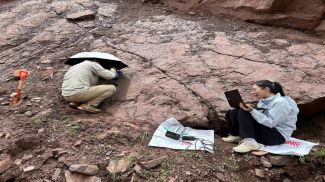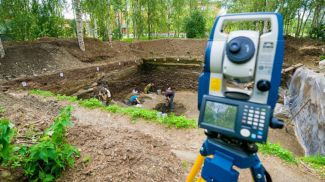
KAHRAMANMARAS, 3 September (BelTA - Anadolu) - Archaeologists have
uncovered two human skeletons, one of a child and the other of an
infant, estimated to be 7,600 years old, in southern Türkiye.
The discovery was made during ongoing excavation work at the Domuztepe Mound in Turkoglu district of Kahramanmaras province. Domuztepe is recognized as one of the largest mound settlements from the Late Neolithic period.
The skeletons were found in two separate graves, with the child estimated to be around 6 or 7 years old.
Halil Tekin, the head of the excavation, said the site was first settled nearly 9,000 years ago.
“We discovered two graves, one belonging to an infant, next to the foundations of a structure related to a keyhole-shaped building,” Tekin told Anadolu. “This was a complete surprise for us, as graves are very rarely found in Domuztepe.”
Tekin said that around 40 skeletons were found in an area described as a "death pit" by another team in the same region in previous years. He added that during the Late Neolithic period, infants and children were often buried inside or near buildings, likely to maintain their connection to the home.
One of the skeletons they found belonged to an infant, and they discovered a feeding pot next to it, he said.
The discovery was made during ongoing excavation work at the Domuztepe Mound in Turkoglu district of Kahramanmaras province. Domuztepe is recognized as one of the largest mound settlements from the Late Neolithic period.
The skeletons were found in two separate graves, with the child estimated to be around 6 or 7 years old.
Halil Tekin, the head of the excavation, said the site was first settled nearly 9,000 years ago.
“We discovered two graves, one belonging to an infant, next to the foundations of a structure related to a keyhole-shaped building,” Tekin told Anadolu. “This was a complete surprise for us, as graves are very rarely found in Domuztepe.”
Tekin said that around 40 skeletons were found in an area described as a "death pit" by another team in the same region in previous years. He added that during the Late Neolithic period, infants and children were often buried inside or near buildings, likely to maintain their connection to the home.
One of the skeletons they found belonged to an infant, and they discovered a feeding pot next to it, he said.













